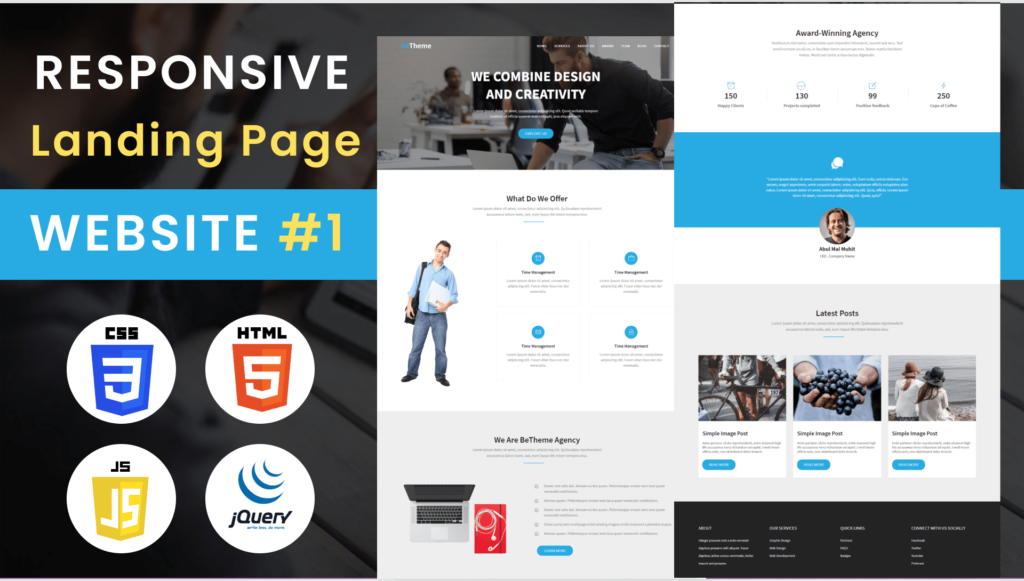Introduction
A well-designed landing page can be a powerful tool for converting visitors into customers. Whether for a product launch, event registration, or service promotion, a landing page should be visually appealing and focused on driving action. In this blog post, we will walk you through the steps to create a simple yet effective landing page using HTML and CSS.
Step 1: Set Up Your HTML Structure
Start by creating an HTML file (e.g., index.html). This file will contain the basic structure of your landing page.
<!DOCTYPE html>
<html lang="en">
<head>
<meta charset="UTF-8">
<meta name="viewport" content="width=device-width, initial-scale=1.0">
<title>Landing Page</title>
<link rel="stylesheet" href="styles.css">
</head>
<body>
<header>
<h1>Welcome to Our Product</h1>
<p>Join us and discover amazing features!</p>
<a href="#signup" class="btn">Sign Up Now</a>
</header>
<section id="features">
<h2>Features</h2>
<div class="feature">
<h3>Feature 1</h3>
<p>Description of Feature 1.</p>
</div>
<div class="feature">
<h3>Feature 2</h3>
<p>Description of Feature 2.</p>
</div>
<div class="feature">
<h3>Feature 3</h3>
<p>Description of Feature 3.</p>
</div>
</section>
<section id="signup">
<h2>Sign Up for Our Newsletter</h2>
<form>
<input type="email" placeholder="Enter your email" required>
<button type="submit" class="btn">Subscribe</button>
</form>
</section>
<footer>
<p>© 2024 TechsterTech. All rights reserved.</p>
</footer>
</body>
</html>Step 2: Add CSS Styles
Create a CSS file (e.g., styles.css) to style your landing page. This file will define the look and feel of your page.
* {
margin: 0;
padding: 0;
box-sizing: border-box;
}
body {
font-family: Arial, sans-serif;
line-height: 1.6;
}
header {
background: #007BFF;
color: #fff;
padding: 40px 20px;
text-align: center;
}
header h1 {
margin-bottom: 10px;
}
header .btn {
background: #FF5733;
color: #fff;
padding: 10px 20px;
text-decoration: none;
border-radius: 5px;
}
section {
padding: 20px;
text-align: center;
}
.feature {
margin: 20px 0;
padding: 10px;
border: 1px solid #ccc;
border-radius: 5px;
}
footer {
background: #f4f4f4;
padding: 10px;
text-align: center;
}Step 3: Enhance Responsiveness
To ensure your landing page looks great on all devices, add media queries to your CSS file.
@media (max-width: 600px) {
header {
padding: 20px 10px;
}
.feature {
margin: 10px 0;
}
header .btn {
padding: 8px 15px;
}
}Step 4: Test Your Landing Page
After you have written the HTML and CSS, open your index.html file in a web browser to see how your landing page looks. Make sure to test it on different devices to ensure responsiveness.
Conclusion
Building a landing page with HTML and CSS is a straightforward process that can significantly impact your marketing efforts. By following these steps, you can create a visually appealing and functional landing page that encourages visitors to take action. Remember to keep your content concise, use clear calls to action, and ensure your page is mobile-friendly.
For expert web development services, including landing page design, visit TechsterTech.com. Our team specializes in creating high-converting websites tailored to your business needs.



